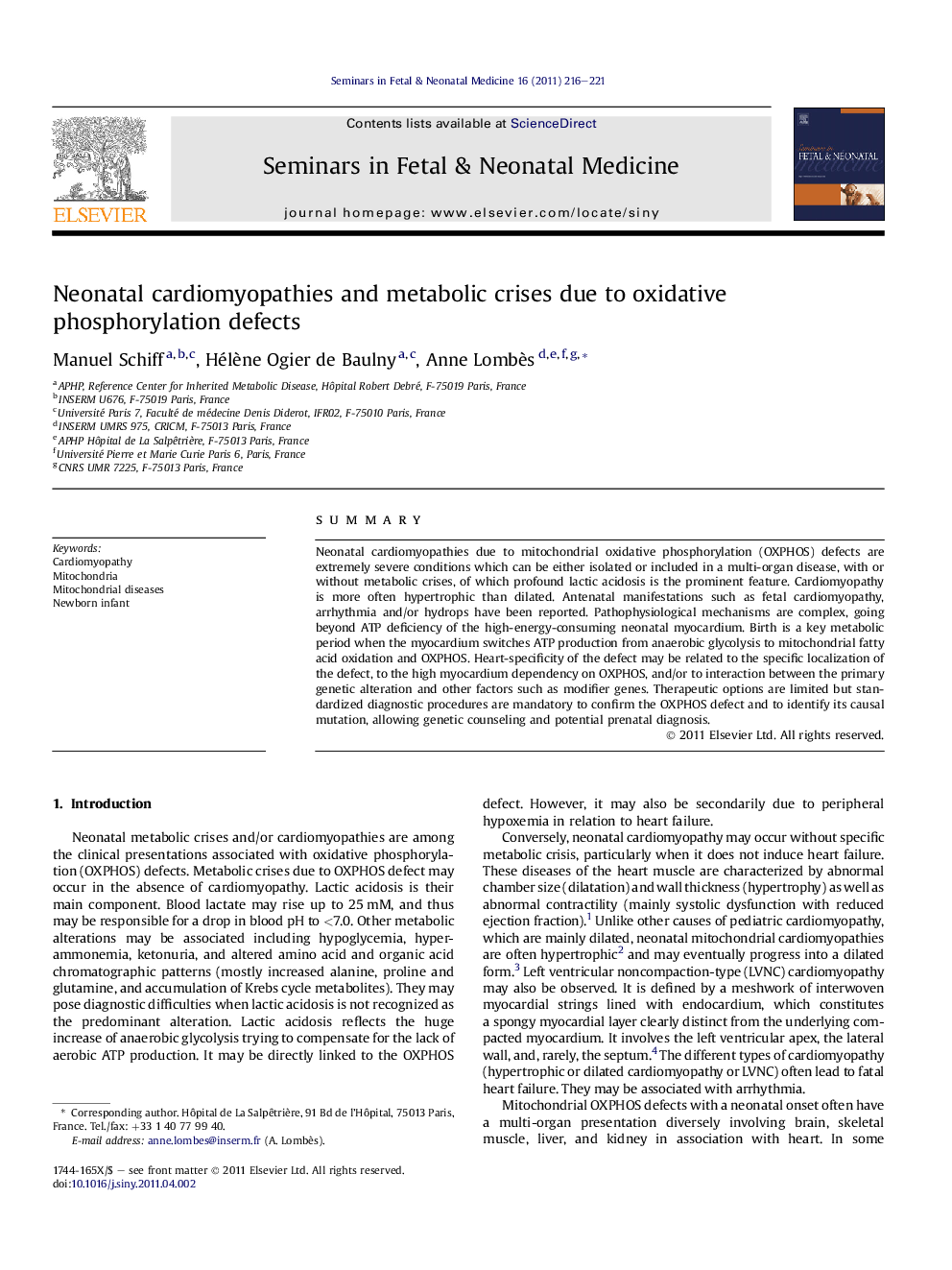| Article ID | Journal | Published Year | Pages | File Type |
|---|---|---|---|---|
| 3974129 | Seminars in Fetal and Neonatal Medicine | 2011 | 6 Pages |
SummaryNeonatal cardiomyopathies due to mitochondrial oxidative phosphorylation (OXPHOS) defects are extremely severe conditions which can be either isolated or included in a multi-organ disease, with or without metabolic crises, of which profound lactic acidosis is the prominent feature. Cardiomyopathy is more often hypertrophic than dilated. Antenatal manifestations such as fetal cardiomyopathy, arrhythmia and/or hydrops have been reported. Pathophysiological mechanisms are complex, going beyond ATP deficiency of the high-energy-consuming neonatal myocardium. Birth is a key metabolic period when the myocardium switches ATP production from anaerobic glycolysis to mitochondrial fatty acid oxidation and OXPHOS. Heart-specificity of the defect may be related to the specific localization of the defect, to the high myocardium dependency on OXPHOS, and/or to interaction between the primary genetic alteration and other factors such as modifier genes. Therapeutic options are limited but standardized diagnostic procedures are mandatory to confirm the OXPHOS defect and to identify its causal mutation, allowing genetic counseling and potential prenatal diagnosis.
